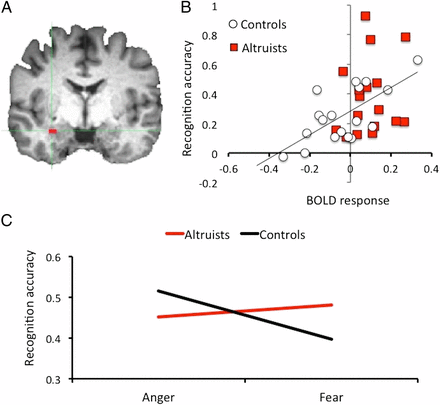At times, it is tempting to take a rather cynical view of human nature. After the latest revelation of political corruption, exposure of fraud, or swiping of the last space in the crowded supermarket parking lot that you had been waiting 10 minutes for, we may want to conclude that people are fundamentally selfish.
A great deal of research has investigated the neural mechanisms that may support anti-social behaviors, such as aggression or the absence of empathy and remorse. But increasing numbers of researchers are approaching this concept from the opposite angle: what are the neural characteristics of altruists, who are willing to improve the well-being of others at the expense of their own?
A Study of Extraordinary Altruists
A recent study by Dr. Abigail Marsh and colleagues at Georgetown University looked at a particularly unique population of altruists: individuals who had volunteered to donate a kidney to a complete stranger (Marsh et al, 2014).
What motivates people to engage, or not engage, in such behaviors? An important component of prosocial behaviors such as altruism may be how an individual responds to the facial expressions of others. Marsh and colleagues have shown that individuals with antisocial traits such as reduced empathy and shallow emotional affect also showed reduced activity in the amygdala, a brain region that plays a key role in emotional regulation, when viewing images of faces with fearful expressions (Marsh et al, 2008; Lozier et al, 2014).
In this most recent study, highly altruistic individuals displayed the exact opposite characteristics (Marsh et al, 2014). During functional magnetic resonance imaging, altruists and controls viewed images of fearful, angry and neutral faces. Compared to controls, altruists exhibited increased activity in the right amygdala when viewing fearful faces. Furthermore, increased amygdala activity predicted increased accuracy in correctly identifying fearful faces across all subjects. Altruists were also found to have a larger right amygdala compared to controls.
Figure 1 from Marsh et al (2014): Group differences in right amygdala blood oxygen level-dependent (BOLD) signal in response to fearful emotion facial expressions.
Although altruism is a complex phenomenon that undoubtedly arises from the interaction of many factors, these findings suggest that altruism may at least in part result from an enhanced sensitivity to the fear and vulnerability of others, which may originate from ancient neural circuits that support the care of vulnerable offspring (Preston, 2013).
References
1. Marsh, A. A., Stoycos, S. A., Brethel-Haurwitz, K. M., Robinson, P., VanMeter, J. W., & Cardinale, E. M. (2014). Neural and cognitive characteristics of extraordinary altruists. Proceedings of the National Academy of Sciences, 111(42), 15036-15041
2. Marsh, A. A., Finger, E. C., Mitchell, D. G., Reid, M. E., Sims, C., Kosson, D. S., … & Blair, R. J. R. (2008). Reduced amygdala response to fearful expressions in children and adolescents with callous-unemotional traits and disruptive behavior disorders.
3. Lozier, L. M., Cardinale, E. M., VanMeter, J. W., & Marsh, A. A. (2014). Mediation of the relationship between callous-unemotional traits and proactive aggression by amygdala response to fear among children with conduct problems.JAMA psychiatry, 71(6), 627-636.
4. Preston, S. D. (2013). The origins of altruism in offspring care.Psychological bulletin, 139(6), 1305.
